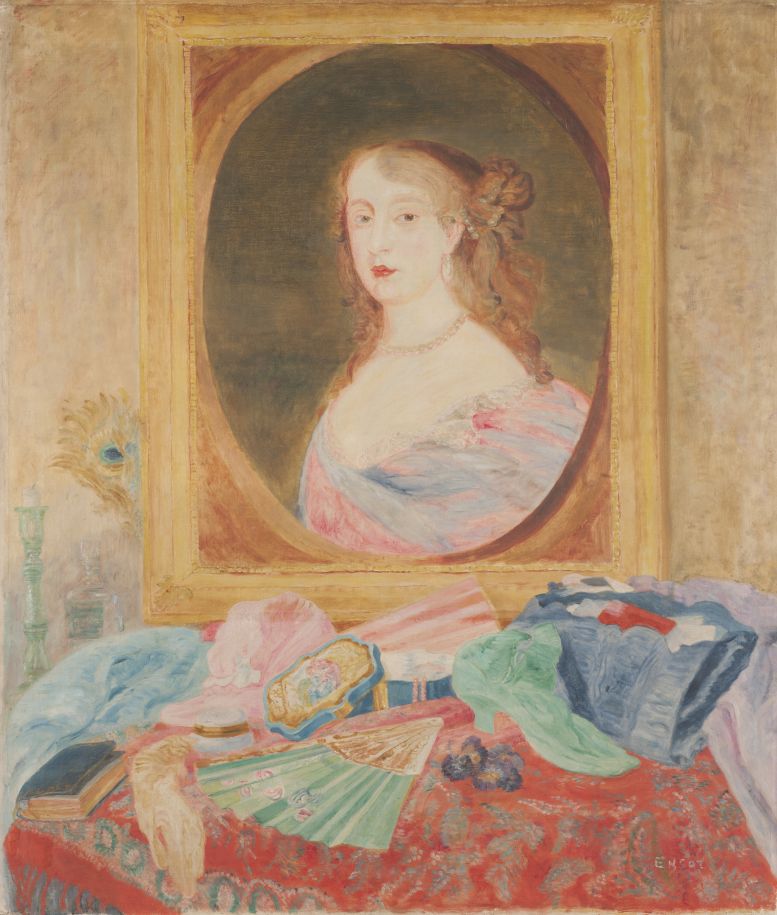
© VG Bild-Kunst, Bonn 2021; Foto: Carsten Gliese
James Ensor (1860 – 1949)
James Ensor spent most of his life in his birthplace Ostend. There his mother had a souvenir shop with carnival masks, shells and curiosities – and these objects repeatedly make an appearance in Ensor’s imagery. The Clemens Sels Museum Neuss owns three paint ings by Ensor as well as numerous graphic works. In this picture Ensor is citing the portrait of a woman by an unknown 18th century English painter that hung in his parents’ home. He referred to this the expressionless, dark picture many times in his own work, reformulating it in completely new terms. Ensor’s Marquise appears in vivid, fresh colors. With full of pride in her status, she gazes pensively at the viewer. Here Ensor has combined the picture-within-a-picture with a stilllife, which has a sinister aspect: the youth of the Marquise is juxtaposed with symbols of transience.
Only in art does beauty seem to be imperishable. The opposing couples of present and past, of transience and eternity result in an interleaving of different levels of reality and time.
Ensor takes up this game with fragmented reality again in his painting "The Bourgeois Salon". The mirrors presented enable the viewer to perceive things outside the depicted scene. Their indirect reproduction reflects Ensor's subtle questioning of that supposedly unshakable reality.